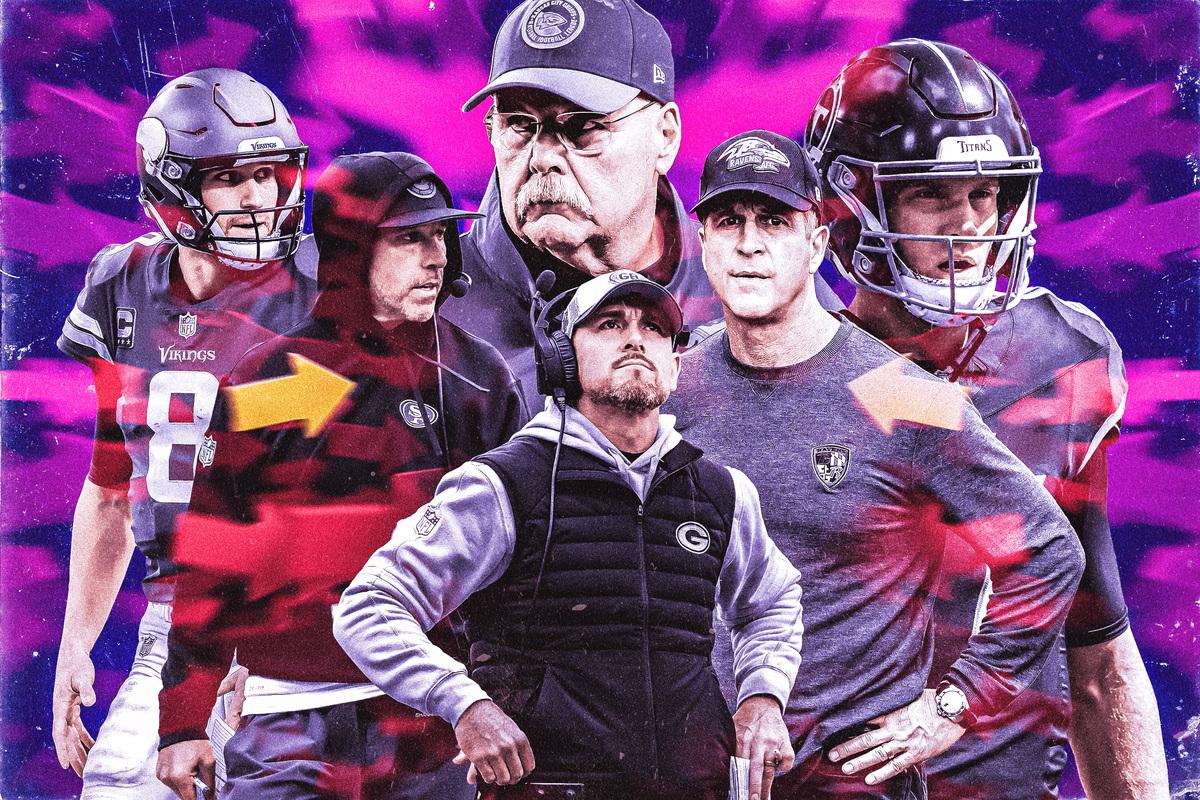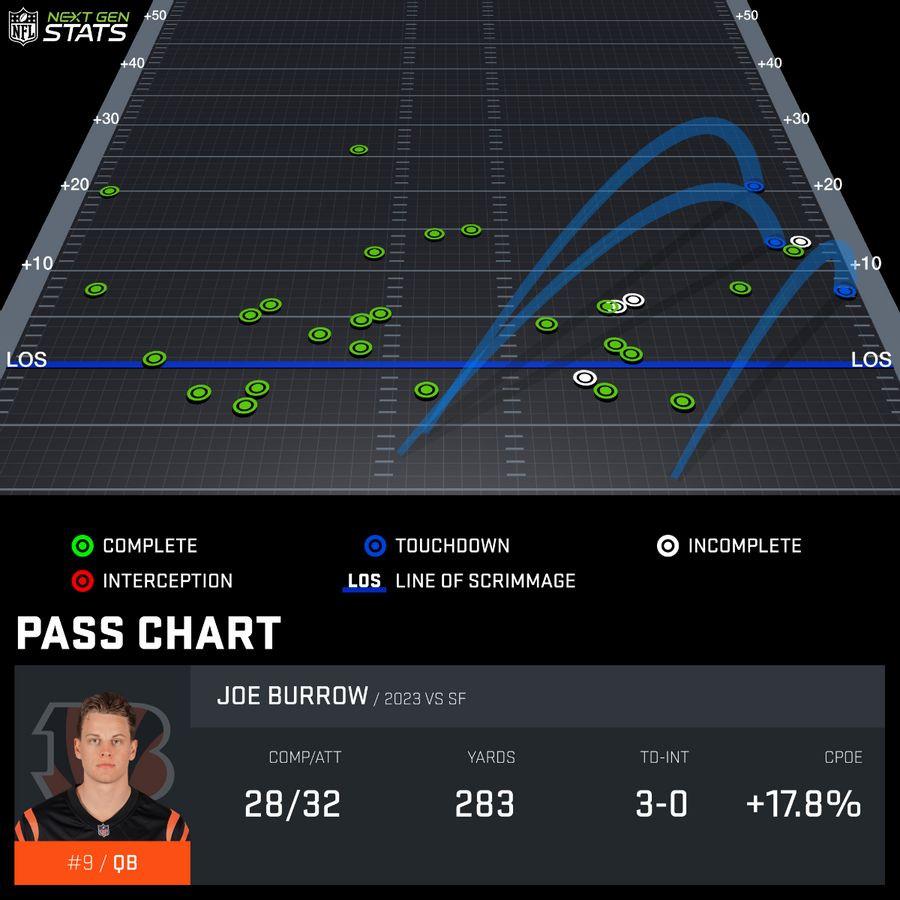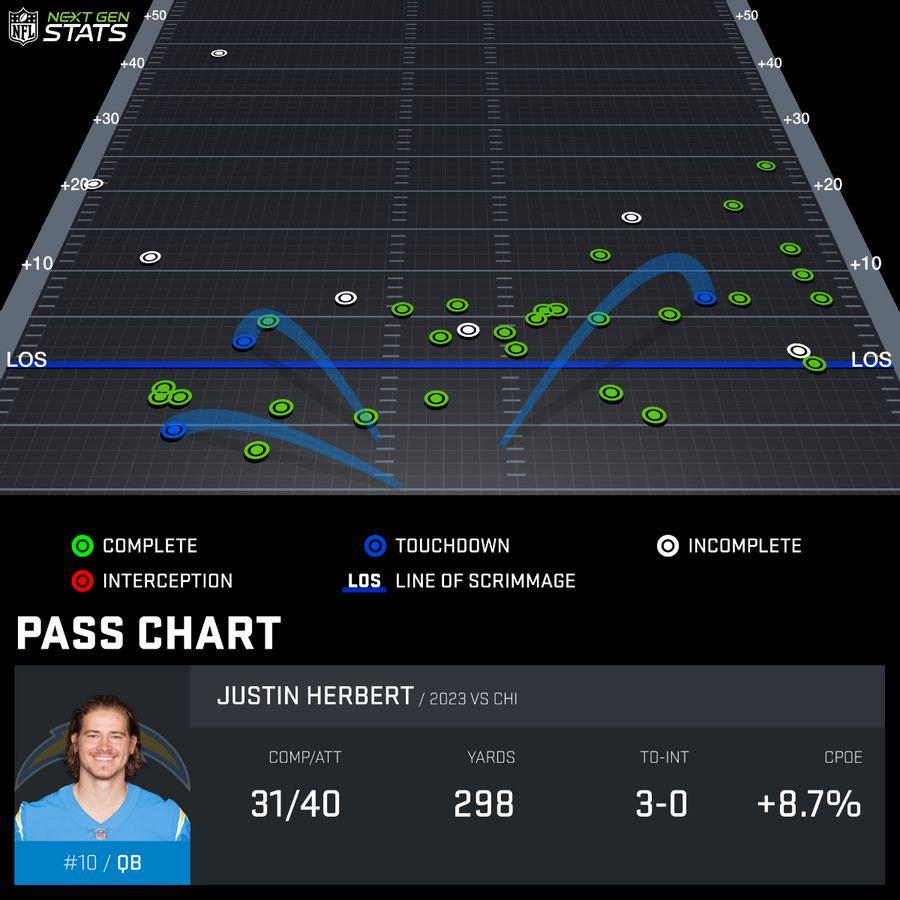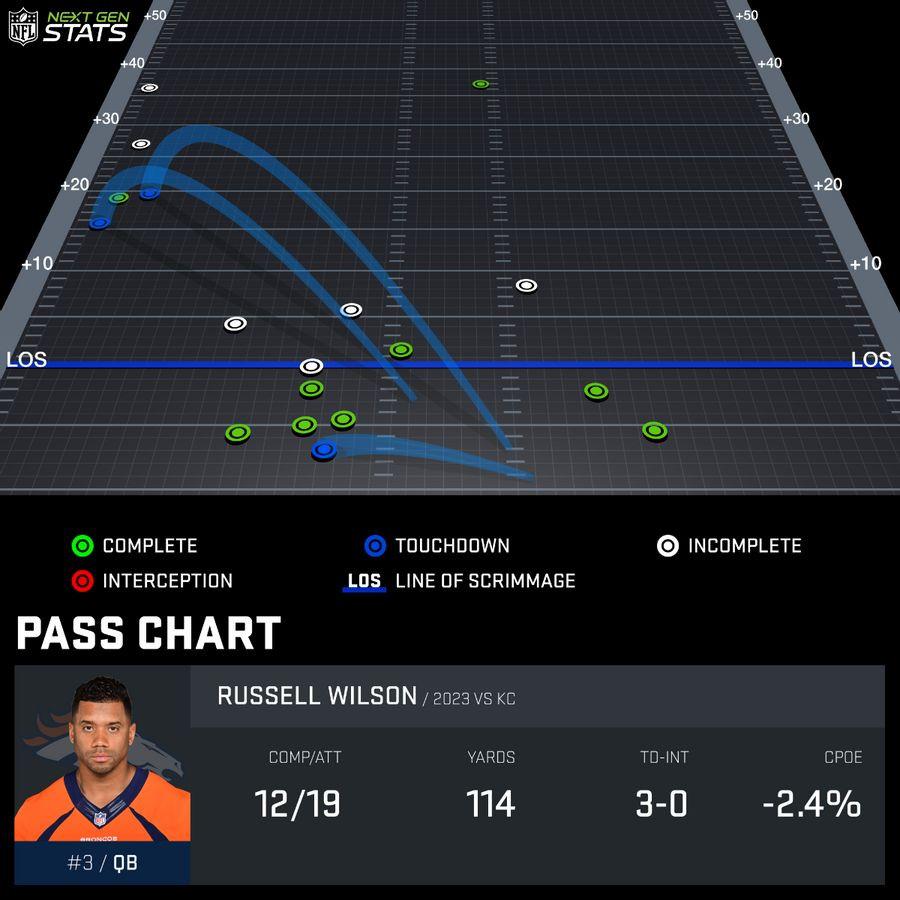Which Teams Should Be Buyers or Sellers at the Trade Deadline? And Which Should Stand Pat?
Sunday’s NFL games offered plenty of strange results. Some of those should clarify the strategies of teams like the Chiefs, Chargers, and Ravens. Others, like the Packers and Vikings, now have a murkier path ahead.
While Halloween is a time for the rest of us to play pretend, in the NFL, it’s a time for teams to get real. Whether that means going all in for a playoff push or accepting that a glaring issue won’t just fix itself by January, reality is starting to set in for a number of clubs across the league. And with the trade deadline set for Tuesday afternoon, there’s a limited window left to make changes.
For a handful of teams, Sunday’s results clarify what needs to be done before the deadline. That could mean waving the white flag on 2023 and starting to set up for the 2024 offseason. Or it could mean trading for the missing piece of a Super Bowl puzzle. This is the last chance playoff hopefuls have to tune up their rosters and the last chance for losing teams to flip players for draft capital. So ahead of Tuesday’s deadline, let’s take a look at six teams that could be active in trade talks and figure out how this past weekend’s games could influence their upcoming decisions.
San Francisco 49ers
After Sunday’s 31-17 loss to the Bengals, Kyle Shanahan claimed that the result would not affect San Francisco’s approach to the trade deadline. “I do believe we have the answers in our building,” the 49ers coach said. “I believe we have good players. I believe we have good coaches. It’s up to me to get them to do better.”
It’s hard to disagree with Shanahan about the players. San Francisco owns a stacked, well-balanced roster, and although there are certainly questions about the quarterback spot after Brock Purdy’s three-turnover day, this team, when healthy, is good enough to win without a star passer. The part about the coaches, though, is where some 49ers fans may push back. They’ve now seen two games in a row in which Steve Wilks’s defense got carved up. Last week it came at the hands of Kirk Cousins, who surgically picked apart the Niners on Monday Night Football. This week, it was Joe Burrow, who finished the game 28-of-32 for 283 yards and three touchdowns. The 49ers defense is officially a problem.
While the opposing teams’ passing numbers will get most of the attention, the unit’s problems start with the run game. This was a potential issue I highlighted after the team’s 5-0 start, and it’s only gotten worse since then. After giving up 134 yards on the ground to a Cincinnati run game that has been trying to find its way for years now, the 49ers sport one of the league’s worst rushing defenses.
In his postgame presser, Shanahan said that the team’s struggles against the run on early downs were to blame for its late-down leakiness against the pass. The 49ers’ highly paid pass rush has been awfully quiet on key passing downs over the past few weeks, but that’s mostly because offenses are avoiding third-and-long situations thanks to productive early-down runs. And while it may feel like the pass defense is much worse compared to how it was a year ago, when DeMeco Ryans was coordinating the unit, it’s actually performing at a similar level.
The 49ers defense, 2022 Vs. 2023
The soft run defense was an issue the 49ers saw coming after they got run over by Philadelphia in last year’s NFC title game. Trading for defensive tackle Javon Hargrave was supposed to solve the problem, but San Francisco has actually regressed in that area. That could be a sign that the team’s problems are a result of defensive structure rather than personnel. The 49ers are, for the most part, a “line up and play” defense. They don’t try to fool the offense as much as they just try to out-execute them, which is hard to do when offenses can reliably pick up 5 yards on first down—whether on the ground or with a quick pass underneath. The Bengals were able to do both on Sunday. The run game was productive all afternoon, and Burrow did this in the passing game:

Cincinnati’s offense poses a rare challenge, sure, but the 49ers will come across more teams of this caliber in January. So if Shanahan was being forthright and the 49ers are done adding to the roster after swinging a deal for pass rusher Randy Gregory two weeks ago, then Wilks will have to make some significant tweaks to the scheme. Given the state of San Francisco’s roster and its cap, that’s probably the most sensible route to take.
Los Angeles Chargers
The Chargers won a football game on Sunday, which is a refreshing change of pace for a team that seems to figure out new ways to lose them every week. But don’t let the 30-13 win over the Bears trick you into thinking Los Angeles, which opened the season 2-4, has righted the ship. After a near-perfect start to the game for Justin Herbert, who completed his first 15 passes against the hapless Chicago defense, many of L.A.’s old problems popped up again: namely, the team’s inability to get receivers open downfield. As masterful as the Chargers’ short passing game was in Week 8, it was really the only thing they did well.

It’s easy to connect the team’s lack of downfield passing to Mike Williams’s season-ending ACL injury, but I’m not sure that’s the root of the problem. Herbert’s average depth of throw has barely moved with Williams off the field, while his inaccuracy and pressure rates have spiked.
Justin Herbert With and Without Mike Williams, 2023 (via TruMedia)
The accuracy problem appears to be the product of an injury to Herbert’s left middle finger, something that the quarterback played through just fine against Chicago. He told NBC before the game that the glove he had been wearing in previous weeks had caused him discomfort, so he played without it against the Bears and was as precise as he was before the injury.
But there’s no such quick fix for Herbert’s increasing rate of pressure. And that’s really becoming an issue in must-pass situations. The Chargers offensive line just isn’t capable of holding up in protection long enough for the team’s slower receiving corps to get open downfield. So while it would make a lot of sense for the front office to trade for a field-stretching receiver, shoring up the pass protection could also do wonders for the passing game.
There are plenty of spots to address along the line, but center might be the most pressing area of need after Corey Linsley was placed on IR with a heart condition. Finding a center who can help Herbert sort out protection calls before the snap could get the Chargers back to where they were early in the season, before the injuries.
Baltimore Ravens
When you have a quarterback who’s capable of doing something like this:
Or this:
... and who has a knack for pulling off a few of those plays every Sunday, it’s easy to overlook the problems of an offense that isn’t regularly producing explosive gains within structure. While the Ravens’ new offensive coordinator, Todd Monken, has finally put Lamar Jackson in an offense that lets him show off his prowess as a passer, the playmaking burden is still mostly falling on no. 8’s shoulders.
For the first time in Jackson’s career, we can’t blame the receiving corps for that. While Zay Flowers, Rashod Bateman, and a potentially washed Odell Beckham Jr. aren’t an elite unit by any means, they are more than enough for a quarterback as talented as Jackson. I’m not sure we can say the same about the team’s group of running backs, which is being led by the extraordinarily mid Gus Edwards. Edwards was the offense’s most productive player in Sunday’s 31-24 win over Arizona, rushing for 80 yards and three touchdowns on 19 carries. But that performance also illustrated his limitations as a lead back: Sure, Edwards can get you 4 yards consistently, but don’t expect much more than that. Justice Hill, the team’s RB2, has a little more juice, but he doesn’t really know how to utilize it. Neither guy is capable of making defenders miss, and the result is a lack of explosive gains by the team’s running backs. Losing J.K. Dobbins to a season-ending Achilles injury put a clear ceiling on Baltimore’s rushing attack. If the team insists on limiting Jackson’s designed carries, the only way it’ll raise that ceiling is by dealing for a back who can consistently break out for long touchdowns.
Of course, the Ravens could go the other way and lean into the passing game further by trading for another receiver, but the price will be extravagant and teams are less likely to deal a top player at a premium position. There are no such concerns about running backs, and with guys like Derrick Henry and Saquon Barkley potentially on the market, there will be plenty of star talent available.
Barkley would be the more attractive option for the Ravens. He’s younger and contributes in the passing game, and while it’s unlikely that he’d have the same impact as someone like Christian McCaffrey has had for the 49ers, he would give Jackson a checkdown option that’d make his life easier as a passer. Barkley’s also got more experience in a shotgun-based run game. And although much of Baltimore’s rushing success against Arizona came on under-center runs, the ground game is still at its most lethal when Jackson is lined up in the gun and has the option to carry the ball himself.
Kansas City Chiefs
Breathe, Chiefs fans. I know losing to Denver is an unfamiliar feeling—and one you haven’t felt since Peyton Manning was still suiting up for the Broncos—but everything is going to be all right. Remember when Kansas City dropped a wonky game to the Colts early last season? That’s what Sunday’s 24-9 loss in Denver was: a bad game in which everything that could go wrong did go wrong. I mean, this is the passing performance they lost to:

The five turnovers committed by Kansas City will grab headlines. Patrick Mahomes threw two picks and was stripped on a sack. Marquez Valdes-Scantling coughed up the ball after a catch. And Mecole Hardman muffed a punt in the fourth quarter. When you turn the ball over five times in the NFL, you typically lose. I’m not sure much more analysis is needed. These games happen—especially in bad weather with a quarterback who was slowed down by the flu. And the Chiefs are still tied for the top seed in the AFC at 6-2 and are one of just two teams in the conference that rank higher than 10th in both offensive and defensive EPA, according to RBSDM.com. Kansas City could afford to lose this game.
If there is one area to be concerned about, though, it’s the Chiefs receiving corps—a group that gives the team absolutely nothing on key passing downs. Overall, Kansas City ranks 26th in EPA per play on throws to receivers, according to TruMedia. On passing downs, which include second- and third-and-long situations, Mahomes is averaging minus-0.05 EPA when throwing to his wideouts. That’s where you’ll find a significant difference between the 2023 passing game and the one that led the league in just about every metric in 2022.
Mahomes’s EPA Average on WR Targets, 2022 Vs. 2023 (via TruMedia)
JuJu Smith-Schuster emerged as the go-to guy when defenses sold out to stop Travis Kelce last season, and Kansas City has been unable to find a replacement for him. If the Chiefs look to make a deadline deal for a receiver, they don’t need to sell out to land a star. They just need to find a chain-mover—maybe even Smith-Schuster himself, who might be available after he got off to a slow start in New England. That should be more than enough to get this offense where it needs to go.
Green Bay Packers
The Packers received a much-needed dose of reality on Sunday, in the form of a 24-10 loss to the rival Vikings at Lambeau Field. Shortly before Green Bay dropped its fourth straight game, Fox’s Jay Glazer included the team on a list of potential buyers in the running back market. But even if the Packers had beaten Minnesota, it would have been naive to think that adding a star back to the NFL’s youngest offense would be enough to get this team back in the playoff race. And it’s even easier to see that now that Green Bay is sitting at 2-5 and just a half game ahead of Tyson Bagent’s Bears at the bottom of the NFC North.
If the season ended today, Green Bay would own the sixth pick in the 2024 NFL draft—just outside of range to take a top quarterback. There is still plenty of time for that to change—with the Packers just 1.5 games out of “first place” in the race for the top pick, they could find themselves in Caleb Williams range in no time. And a soft tank might be enough to secure a pick at the top of the board.
That means no fire sale of the team’s expensive defense—which wouldn’t even provide much financial relief after the Packers spent the offseason restructuring seemingly every veteran defender’s contract. Green Bay cleared nearly $30 million in 2023 cap space earlier this year by reworking the deals of Kenny Clark, De’Vondre Campbell, Preston Smith, Rasul Douglas, and Darnell Savage. Trading any of those four players midseason would save under $2 million this year and would result in a much larger dead cap penalty in 2024.
I can’t see Green Bay getting enough in return for any of those guys to justify a deal like that. And the front office wouldn’t be sending its young, impressionable locker room an encouraging message if it pulled the plug on the season after only seven games. As easy as it would be to sell a tank job to a fan base that’s growing increasingly frustrated by the week, the Packers haven’t put themselves in a position to commit to one without making things awkward—both in the locker room and on the balance sheet. If the team keeps losing, Brian Gutekunst and Co. can tear things down in the offseason. If we see real strides from the young offense in the second half, the team may want to hold on to some of its veteran talent as it reshapes the roster for 2024. Either way, being active at the deadline makes little sense.
New York Jets and Minnesota Vikings
I’m lumping these two teams together because they’re in similar spots: Both are lurking on the fringes of the wild-card race and both currently are leaning on (bad) BYU quarterbacks to help get them to the postseason. In the Jets’ case, it’s Zach Wilson, who needed a miracle game-tying drive just to force overtime against a Giants team that finished with NEGATIVE NINE PASSING YARDS in what ended up as a 13-10 win for the Jets. As sad as that sounds, the state of the Vikings might be even more depressing after Kirk Cousins was lost for the season after suffering an Achilles injury in the fourth quarter of Sunday’s win over the Packers. Now we’re either going to see Wilson and one of the Vikings backups (2023 fifth-round pick Jaren Hall or Nick Mullens once he’s off injured reserve) flail about for the next two months, or we’re about to witness the most desperate bidding war you have ever seen. The “winner” gets whatever’s left of Ryan Tannehill.
While Tannehill is probably good enough to push either of these teams to the playoffs, is it really worth the trouble of trading for what would be a one-year rental in either case? Maybe it is for a Jets team that hasn’t sniffed the playoffs in over a decade, but New York expects Aaron Rodgers to return in 2024 (potentially even later this season) and might as well hold on to its draft picks and cap space to help gear up for that rather than trying to turn a flawed 4-3 team into a contender on the fly. For Minnesota, staying out of the trade market for a quarterback is even more of a no-brainer. The front office, led by second-year general manager Kwesi Adofo-Mensah, already should have been considering a rebuild, and losing Cousins might be the final push it needs to commit to the endeavor.
While a trade for a QB like Tannehill might give either fan base short-term hope, it could derail that team’s long-term plans. The prescription may be different for both teams—Minnesota can start to sell off expensive players, while New York should just stand pat—but the diagnosis is the same: This season is a lost cause, and there’s no need to try to salvage it.


